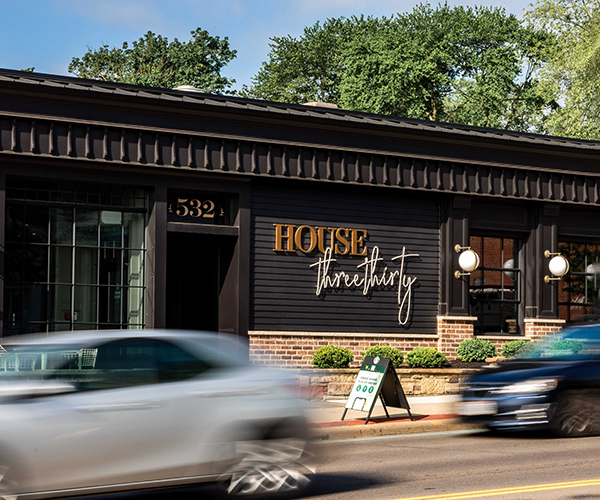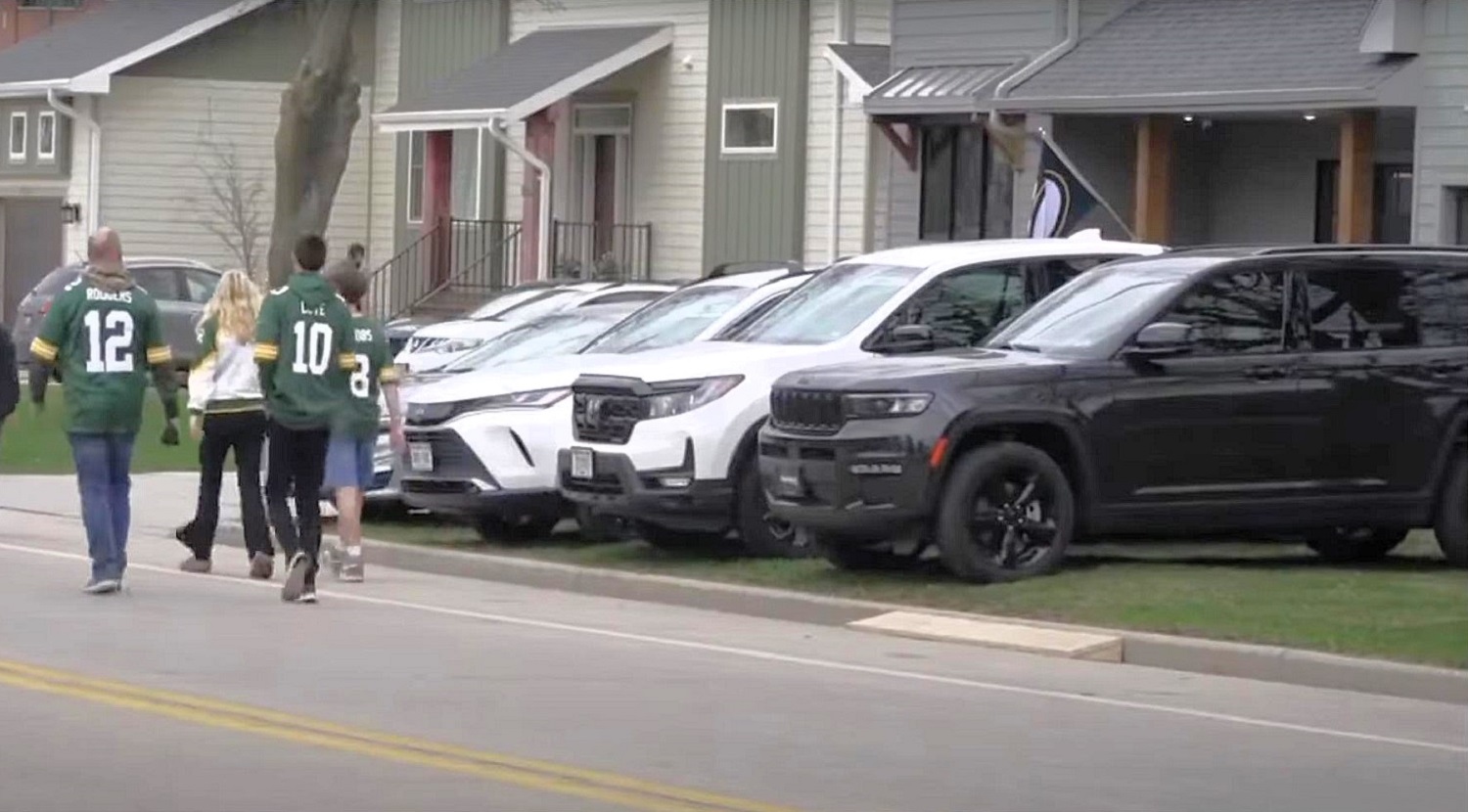From Cavs Court to Monsters Hockey Rink: Behind Rocket Arena’s Quick Transformations
The Rocket Arena staff breaks down how the arena transforms between Cleveland’s basketball and hockey games, sometimes just days apart.
by Julia Lombardo | Oct. 23, 2024 | 9:00 AM
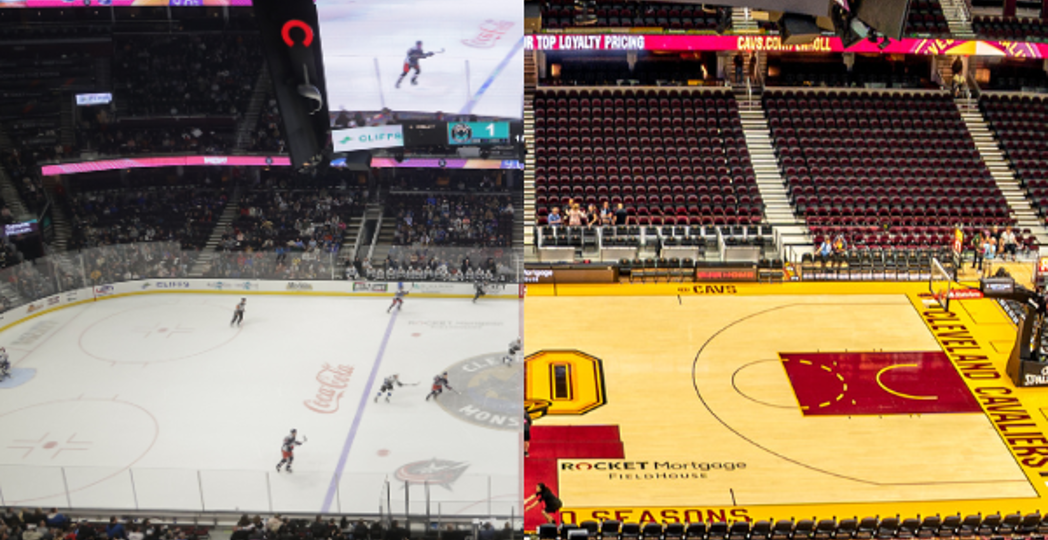
Courtesy Rocket Arena, Courtesy Erik Drost via Flickr
In the few hours before a Cavs’ home game, a team led by Sherman Cartwright, the senior director of operations at Rocket Arena, will dust off the court the city knows and loves.
“They're the heartbeat of the venue,” Antony Bonavita, the executive vice president and chief venues and development officer of facility operations, says about the behind-the-scenes team.
And like many unsung heroes, this crew works when no one’s watching.
A riser lies below a durable plastic subfloor. (“We are the only team in the league that actually raises the floor,” Cartwright says.) Utilized to improve sightlines, the riser also provides the outline for the basketball court, which spreads the width of 15 wooden panels. Each is laid individually as retractable seating sections on the north and south courtsides are brought forward to provide the up-close experience that fans know and love. The four-way screen that centers it all is simply lowered from its permanent place on the ceiling, but its fun, fiery effects come with a little extra precaution.
“There’s flames and pyro effects that come out of (the screen)," Cartwright says. “So the fire marshal needs to come in to do a test to make sure it's good for the game.”
Once that clears, things settle. For a little while, at least.
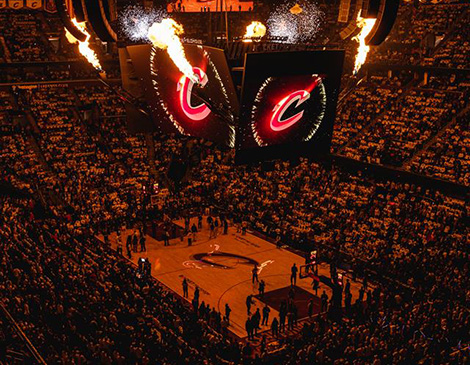
Courtesy Rocket Arena
READ MORE: After 30 Years, Rocket Mortgage FieldHouse Continues to Revitalize Downtown Cleveland
That’s because the Cavs aren’t the only team that competes at this time of year. The Cleveland Monsters, who also call Rocket Arena home, start the hockey season in October, around the same time the NBA commences. (For example, in 2024 the home openers were back-to-back, on Oct. 25 for the Cavs and Oct. 26 for the Monsters.) Double headers at the arena are a not-so-rare phenomenon that Cleveland has seen periodically over the past few seasons. It deems fun for fans, but poses a tight task for Cartwright’s team to handle.
Late after a Cavs game, around 50 staff members storm the floor for teardown, with less than 24 hours later to prepare the rink for a Monsters home game.
Though it would be cool to admit that the ice for a hockey rink will be made overnight, this part is actually done days in advance.
A plant below the concrete floor, which spans about 200 feet long and 85 feet wide, is set between 14 and 16 degrees Fahrenheit. Giving it time to cool, staff returns the next morning with hoses to create nearly 15,000 gallons of ice directly on the floor. The ice is then painted white, and supplemental logos and goal lines are added and secured with a top coat of water.
This rink is located just beneath the basketball court — and is revealed after the Cavs play.
After the initial tear-down group of 50, smaller groups of operations staff will come throughout the early morning to set up smaller fixtures. The retractable seating is put away, barriers are equipped around the rink and perimeter netting that sprawls about 60 feet long and 96 feet wide encompasses the ice. Screens, scoreboards and benches are also parts of these tasks, plus a maintenance staff that checks the power and the temperature of the ice. In batches, the process takes less than 12 hours.
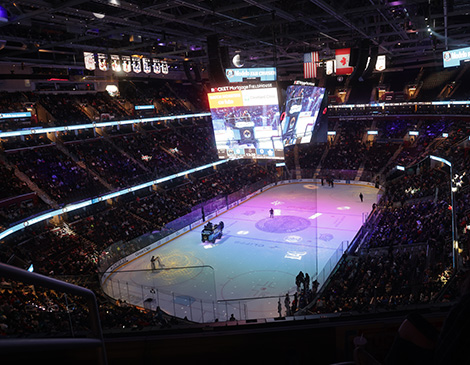
Courtesy Rocket Arena
READ MORE: The 30 Biggest Moments in Rocket Mortgage FieldHouse's 30-Year History
This rink will last the entire season. During any forthcoming concerts, sports games and special events, the plastic subfloor acts as a barrier for the ice, and for hockey games, the subfloor is simply removed. Then, by the third period of the Monsters’ final game in April, the temperature of the underground plant will rise so the ice can soften, making it ready to bulldoze out in trucks that night.
“It takes a village to make it happen,” Bonavita says. “We're very blessed to have a great team on every level throughout this facility to make it be as great as it is.”
Courtesy the Cleveland Cavaliers
For more updates about Cleveland, sign up for our Cleveland Magazine Daily newsletter, delivered to your inbox six times a week.
Cleveland Magazine is also available in print, publishing 12 times a year with immersive features, helpful guides and beautiful photography and design.

Julia Lombardo
Julia Lombardo is the editor of Cleveland Magazine’s home and style section and contributes to coverage of arts, culture and dining. She graduated from The Ohio State University in 2023 with an English degree. As both a journalist and poet, she is inspired by stories with creative flair. When she puts down the pen, she enjoys going to concerts, ranking coffee shops and walking aimlessly through wooded trails.
Trending
-
1
-
2
-
3
-
4
-
5





